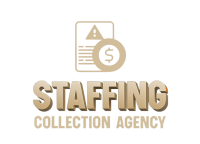Chasing payments for short-term staffing projects can be a challenging task, especially when dealing with delinquent clients. Having a structured recovery system in place can greatly improve the chances of recovering company funds efficiently. In this article, we will explore a three-phase Recovery System designed to assist companies in recovering outstanding payments for short-term staffing projects.
Key Takeaways
- Implementing a structured recovery system can improve the efficiency of recovering company funds from delinquent clients.
- Phase One of the Recovery System involves sending letters to debtors, skip-tracing, and attempting to contact debtors for resolution within the first 24 hours.
- Phase Two of the Recovery System includes forwarding the case to affiliated attorneys for legal actions if initial attempts to resolve the account fail.
- Phase Three provides recommendations for further actions, including closure of the case or proceeding with litigation.
- Rates for recovery services vary based on the number of claims submitted and the age and amount of the accounts.
Recovery System for Company Funds
Phase One
Within the first 24 hours of initiating Phase One, a multi-pronged approach is set in motion to recover company funds. Immediate action is taken to ensure that the debtor is aware of the outstanding debt and the urgency of resolution. A series of four letters is dispatched via US Mail as a formal notice.
Skip-tracing and investigative measures are employed to gather the most current financial and contact information. Our collectors engage in persistent attempts to reach a resolution through various communication channels, including phone calls, emails, text messages, and faxes.
Daily contact attempts are standard during the initial 30 to 60 days. Should these efforts not yield the desired outcome, the process seamlessly transitions to Phase Two, involving legal escalation.
The effectiveness of Phase One is critical to setting the tone for the recovery process. It is designed to prompt a swift response and lay the groundwork for subsequent actions if necessary.
Phase Two
Upon escalation to Phase Two, the case is transferred to a local attorney within our network, initiating a more formal collection process. The attorney’s actions include:
- Drafting and sending a series of authoritative letters on law firm letterhead, demanding payment.
- Persistent attempts to contact the debtor through phone calls, aiming to secure a resolution.
If these efforts do not yield results, a detailed report is prepared, outlining the challenges encountered and recommending potential next steps. This report is critical in deciding whether to proceed to Phase Three.
The transition to Phase Two signifies a shift in strategy, from internal collection efforts to legal enforcement.
The costs associated with this phase are transparent and communicated upfront, ensuring no hidden fees surprise you later in the process.
Phase Three
Upon reaching Phase Three, the path forward hinges on the feasibility of recovery. If prospects are dim, we advise case closure, sparing you further costs. Conversely, opting for litigation necessitates upfront legal fees, typically between $600 to $700. These cover court costs and filing fees, with our affiliated attorney initiating the lawsuit for the full amount due.
Should litigation prove unsuccessful, rest assured, you owe nothing further to our firm or attorney.
Our fee structure is straightforward and competitive, with rates varying based on claim age, amount, and volume. Here’s a snapshot:
| Claims Submitted | Accounts < 1 Year | Accounts > 1 Year | Accounts < $1000 | Attorney Placed |
|---|---|---|---|---|
| 1-9 | 30% | 40% | 50% | 50% |
| 10+ | 27% | 35% | 40% | 50% |
In the event of non-litigation, you may withdraw the claim or allow continued pursuit through standard collection activities such as calls and emails. The choice is yours, with transparency and control at the forefront of our recovery system.
Frequently Asked Questions
What is the Recovery System for Company Funds?
The Recovery System for Company Funds consists of three phases: Phase One, Phase Two, and Phase Three. Each phase involves specific actions to recover company funds from debtors.
What happens in Phase One of the Recovery System?
In Phase One, within 24 hours of placing an account, letters are sent to the debtor, investigations are conducted to obtain debtor information, and attempts are made to contact the debtor for resolution. If unsuccessful, the case proceeds to Phase Two.
What is the process in Phase Two of the Recovery System?
In Phase Two, the case is forwarded to an affiliated attorney who sends demand letters to the debtor and attempts to contact them. If resolution is not reached, recommendations are provided for the next steps.
What occurs in Phase Three of the Recovery System?
In Phase Three, two options are presented: closure of the case if recovery is unlikely or litigation if recommended. Legal action requires upfront costs, and rates for collection services vary based on the number and age of claims.
What are the costs associated with legal action in the Recovery System?
Legal action costs include upfront fees for court costs, filing fees, etc., typically ranging from $600.00 to $700.00. If litigation fails, no fees are owed to the firm or affiliated attorney.
How are collection rates determined in the Recovery System?
Collection rates are based on the number of claims submitted within the first week, with varying percentages depending on the age and amount of the accounts. Rates are competitive and tailored to the specific situation.





